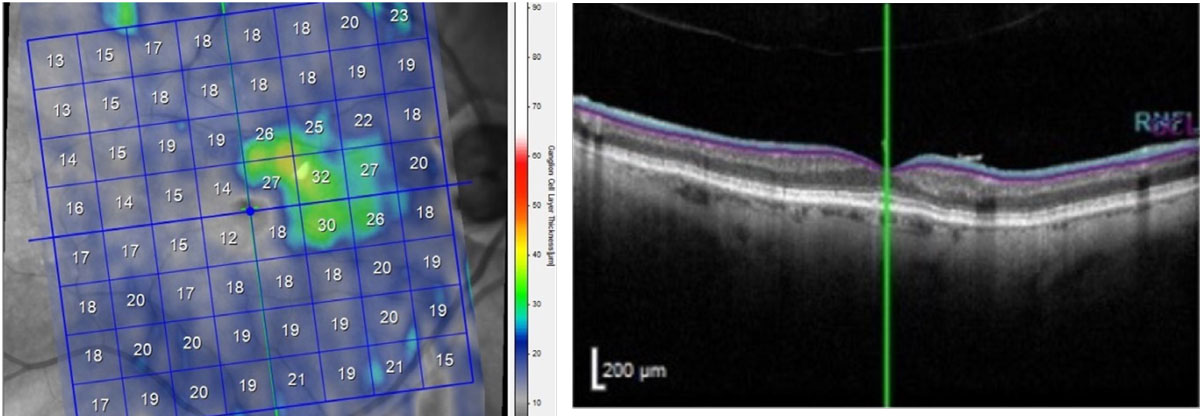 |
|
Structural damage seen on OCT is more representative of glaucoma staging systems than perimetry. Photo: James L. Fanelli, OD. Click image to enlarge. |
The current ICD-10 glaucoma severity grading system is based on the extent of regional involvement. Given the known poor sensitivity of the 24-2 visual field (VF) test in detecting early disease and macular damage, a team of researchers recently proposed, in the American Journal of Ophthalmology, that the ICD-10 codes do not accurately reflect the extent of glaucomatous damage. On the other hand, posterior segment imaging with spectral-domain or swept-source OCT provides useful information to identify structural glaucomatous damage and disease progression. The team’s study demonstrated that the current ICD grading system for glaucoma severity often underestimates the extent of disease due to the 24-2 VF missing central involvement. They proposed that incorporating additional tests that better assess central involvement might help the ICD-10 more accurately reflect the extent of glaucomatous damage.
The analysis by several glaucoma specialists, including the influential Don Hood, MD, evaluated 80 eyes with glaucomatous optic neuropathy. Masked reviewers assigned an ICD-10 severity grade of mild, moderate or advanced based on 24-2 VF testing. Two additional examiners determined the presence of OCT structural damage in each hemifield and/or central 5o to define an OCT equivalent ICD-10 classification.
Based on 24-2 VF testing, five, 23 and 42 cases were classified as mild, moderate and advanced, respectively. OCT revealed a wide variation of damage across these grades, as the same classifications were then applied with this modality to six, seven and 67 cases, respectively. The OCT classifications were more severe in 36% of cases. In 41% of cases, the 24-2 missed macular damage detected by OCT. In 5% of cases, VFs overestimated the severity, likely due to the variability of the 24-2 test.
The researchers noted that the 24-2 alone was not sufficient, and other tests that are more sensitive for central involvement could also be included in the grading system to make it more reflective of overall disease status, rather than functional status alone.
They suggested OCT might eventually even serve as an indicator to decide which type of VF test should be used for each individual case.
“It is important to note, that regardless of the test used instead of the 24-2 to determine central involvement, the increased sensitivity will inevitably result in increased severity scores,” they wrote in their paper. “This must also be taken into consideration and possibly require a modification in the rules of the ICD-10, if the intent of this classification system is to reflect the extent of the glaucoma.”
Leshno A, Tsamis E, Harizman N, et al. The ICD-10 glaucoma severity score underestimates the extent of glaucomatous optic nerve damage. Am J Ophthamol. August 20, 2022. [Epub ahead of print]. |


